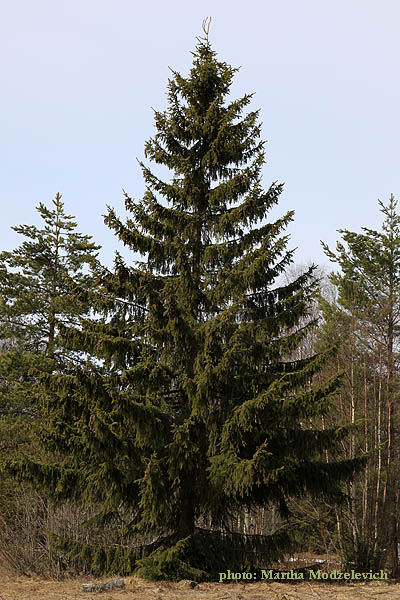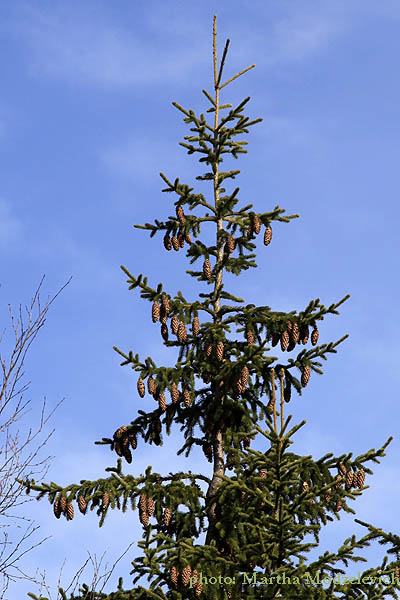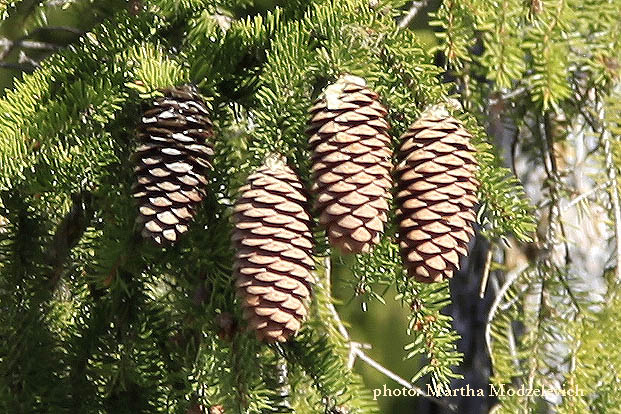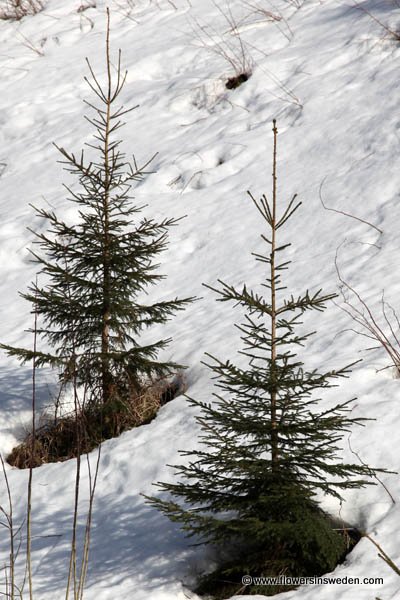
| Scientific name: | Picea abies (L.) H.Karst. | |
| Synonym name: | Picea excelsa (Lam.) Link | |
| Swedish name: | Gran, rödgran, vanlig gran | |
| German name: | Fichte | |
| Nederlandse naam: | Fijnspar | |
| English name: | Norway Spruce | Plant Family: | Pinaceae, Pine family, Tallväxter |
 |
| Life form: | Evergreen coniferous tree | |
| Stems: | Trunk thick gray scales with age; mature branches have a downswept angle with upturned ends, with pendulous branchlets (skirts) hanging from the main branches. | |
| Leaves: | Dark green needle-like, 12-24 mm long, quadrangular in cross-section(shoots are orange-brown and glabrous); needles are angled forward towards the end of the stem | |
| Flowers: | Monoecious, with the staminate flowers in the leaf axils and pistillate flowers at the termini of stems, both being pink-purple in color and concentrated in the crowns of mature trees | |
| Flowering Period: | May, June | |
| Fruits: | Cones 9-17 cm long, in the upper one-third of mature trees at the branch tips; light green with a purplish cast when immature, becoming tan-brown with maturity and slowly abscising. | |
| Habitat: | Woods |
 Derivation of the botanical name: Picea, Latin for "pine". abies Latin for "fir". Silver fir, fir tree.
Used as a Christmas tree and in forestry for timber and paper production.   |